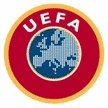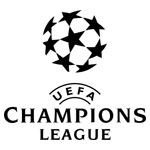|

| ||
This page was the main page of the 2019/2020 season. All text has to be interpreted within that context. No changes are applied. See below for a general description of the format of the Champions League and the Europa League.

Champions League
The Champions League has 32 teams in the group stage, and is preceded
by five qualifying stages. The last qualifying round is also called the
play-off round. The champions of all countries enter the Champions
League, but high ranked countries can send up to 5 teams. Some teams of
high ranked countries are directly qualified for the group stage, while
others have to play qualifying rounds.
If the title holder spots are not used then the format is rebalanced,
see Access list for all details.
See
wikipedia
for more general info.
| CHAMPIONS LEAGUE | ||
|---|---|---|
| Preliminary Round | June | 4 champions from countries ranked 52 or lower |
| 1st Qualifying Round | July |
1 winner from perliminary round 33 champions from countries ranked 18-51 |
| 2nd Qualifying Round | July |
involving 26 teams split in two sections: Champions section with 20 teams 17 winners from 1st qualifying round 3 champions from countries ranked 15-17 Non-Champions section with 10 teams 6 second-placed teams from countries ranked 10-15 |
| 3rd Qualifying Round | August |
involving 20 teams split in two sections: Champions section with 12 teams 10 winners from 2nd qualifying round 2 champions from countries ranked 13-14 Non-Champions section with 8 teams 3 winners from 2nd qualifying round 3 second-placed teams from countries ranked 7-9 2 third-placed teams from country ranked 5-6 |
|
4th Qualifying Round (play-off round) |
August |
involving 12 teams split in two sections: Champions section with 8 teams 6 winners from 3rd qualifying round 2 champions from countries ranked 11-12 Non-Champions section with 4 teams 4 winners from 3rd qualifying round |
| Group Stage | Sep-Dec |
involving 8 groups of 4 teams each: 6 winners from 4th qualifying round 10 champions from countries ranked 1-10 6 second-placed teams from countries ranked 1-6 4 third-placed teams from countries ranked 1-4 4 fouth-placed teams from countries ranked 1-4 1 Champions League cup holder 1 Europa League cup holder |
| Round 2 | Feb/Mar |
involving 16 teams: 8 group winners from the group stage 8 group runners-up from the group stage |
| Final stage | Mar-May |
involving 8 teams: 8 winners of the second round play the quarter finals, the semi finals, and the final |
 Losing teams In the Champions League enter the Europa League,
Third-placed teams from the group stage enter the round of 32
in the Europa League.
Losing teams In the Champions League enter the Europa League,
Third-placed teams from the group stage enter the round of 32
in the Europa League.
The title-holder always qualifies directly for the group stage of the Champions League. If the title holder already qualified for European football the total number of teams of that association does not change. The maximum number of teams of one association in the group stage of the Champions League is five. If more teams qualify the last-placed team for the Champions League of that association has to take part in the Europa League.
If in the group stage of the Champions League two or more teams finish equal on points after all the group matches have been played, the following criteria are applied to determine the group rankings:
- Higher number of points obtained in the matches between the teams in question
- Superior goal difference from the matches between the teams in question
- Higher number of goals scored in the matches between the teams in question
- Higher number of goals scored away from home in the matches between the teams in question
- If teams still have an equal ranking, the above criteria 1-4 are reapplied exclusively to the matches between the teams in question to determine the final ranking. If this procedure does not lead to a decision, the criteria 6-12 below apply
- Superior goal difference in all group matches
- Higher number of goals scored in all group matches
- Higher number of away goals scored in all group matches
- Higher number of wins in all group matches
- Higher number of away wins in all group matches
- Lower disciplinary points from cards in all group matches (red=3, yellow=1)
- Higher club coefficient
See the Regulations of the Champions League 2019/2020 for a complete and formal description of all regulations.

Europa League
The Europa League is a competition for the cup winners and a number of
high-placed teams of the domestic league in each country. The number of
teams is depending on the country ranking. Fair Play teams no longer qualify for the Europa League. See wikipedia for more general info.
| EUROPA LEAGUE | ||
|---|---|---|
| Preliminary Round | June/July |
6 cup winners from countries ranked 50-55 6 second-placed teams from countries ranked 49-54 4 third-placed teams from countries ranked 48-51 |
| 1st Qualifying Round | July |
involving 94 teams: 8 winners from preliminary round 25 cup winners from countries ranked 25-49 30 second-placed teams from countries ranked 18-48 31 third-placed teams from countries ranked 16-47 |
| 2nd Qualifying Round | July |
involving 94 teams split in two sections: Main path with 74 teams 47 winners from 1st qualifying round 7 cup winners from countries ranked 18-24 2 second-placed teams from countries ranked 16-17 3 third-placed teams from countries ranked 13-15 9 fourth-placed teams from countries ranked 7-15 2 fifth-placed teams from countries ranked 5-6 4 sixth-placed teams from countries ranked 1-4 Champions path with 20 teams 3 losers of the Champions League preliminary round 17 losers of the Champions League 1st qualifying round |
| 3th Qualifying Round | August |
involving 72 teams split in two sections: Main path with 52 teams 37 winners from 2nd qualifying round 5 cup winners from countries ranked 13-17 6 third-placed teams from countries ranked 7-12 1 fourth-placed teams from country ranked 6 3 losers of the Champions League 2nd qualifying round Champions path with 20 teams 10 winners from Europa League 2nd qualifying round 10 losers of the Champions League 2nd qualifying round |
| 4th Qualifying Round | August |
involving 42 teams split in two sections: Main path with 52 teams 26 winners from 3rd qualifying round Champions path with 16 teams 10 winners from Europa League 3rd qualifying round 6 losers of the Champions League 3rd qualifying round |
| Group stage | Sep-Dec |
involving 12 groups of 4 teams each: 13 winners of the 4th qualifying round (main path) 8 winners of the 4th qualifying round (champions path) 6 losers of the Champions League 4th qualifying round 4 losers of the Champions League 3rd qualifying round 12 cup winners from countries ranked 1-12 1 fourth-placed teams from country ranked 5 4 fifth-placed teams from countries ranked 1-4 |
| Round 2 | February |
involving 32 teams: 12 group winners from the group stage 12 group runners-up from the group stage 8 third-placed teams from the group stage of the Champions League |
| Round 3 | March |
involving 16 teams: 16 winners of the second round |
| Final stage | April-May |
involving 8 teams: 8 winners of the second round play the quarter finals, the semi finals, and the final |
 If the cup winner of a country qualifies for the Champions League,
then an additional team based on league position will be qualified.
In some countries (England and France) the last league entrant
position is given to the League Cup Winner.
If the cup winner of a country qualifies for the Champions League,
then an additional team based on league position will be qualified.
In some countries (England and France) the last league entrant
position is given to the League Cup Winner.
Depending on the use of the title holder spots in the Champions League the access list for the Europa League might need to be adapted. If so then priority is given to cup winners. See Access list for all details.
If two or more teams are equal on points on completion of all the group matches, the same criteria as for the Champions League apply (see above).
See the Regulations of the Europa League 2019/2020 for a complete and formal description of all regulations.
| Bert Kassies | bert@kassiesa.net |
